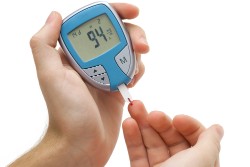Detailed review of FMD: a diet that simulates starvation
There are many ways of fasting, such as interval fasting or water fasting.
One of the recent trends is &171;imitation of fasting&187; – limiting the caloric content of the diet for a certain period of time. The technique is characterized by proven effectiveness and ease of compliance.
Content
What is the essence of FMD?

FMD (English Fast Mimicking Diet) stands for "Fast mimicking diet". It was developed by Walter Longo, a healthcare specialist at the University of Southern California (USA).
A diet called FMD is a special kind of interval fasting, which is devoid of many disadvantages inherent in classical schemes, such as Interval fasting protocol 16/8 .
Thus, during FMD compliance, there is a low incidence of side effects. It also has a narrower range of contraindications. The effectiveness of the scheme has been confirmed in more than 10 major scientific studies.
The main rule of the diet is that once a month for 5 consecutive days the total caloric content of the diet is limited to 34-54% .
It simulates physiological reaction the body's response to traditional fasting methods: triggers cell regeneration, reduces inflammation and enhances fat burning.
In addition, during normal fasting, insulin-like growth factor-1 (IGF-1) decreases. But a modern person is usually not able to completely give up food for several days. But &171;imitation of fasting&187; allows you to reduce IGF-1 without the "painful" complete refusal of food.
It has also been proven that the FMD protocol affects almost all types of metabolism and reduces the risk of many pathologies from the cardiovascular, endocrine, urinary, digestive and central nervous systems. It allows you to reduce the likelihood of malignant neoplasms, as well as increase the overall life expectancy.
Compliance Rules
 According to the diet plan, for five days the caloric content of the diet and its composition is significantly limited and looks like this:
According to the diet plan, for five days the caloric content of the diet and its composition is significantly limited and looks like this:
- Day 1. Daily calorie content is about 1090 kcal (54% of the recommended value). The percentage of nutrients: proteins – 10%, fats – 56%, carbohydrates – 34%.
- Day 2-5. Daily calorie content is about 725 kcal (34% of the recommended value). The percentage of nutrients: proteins – 9%, fats – 44%, carbohydrates – 47%.
A diet low in carbohydrates and low in total energy value, but with a high concentration of fats, ensures the body's energy production from non-carbohydrate sources, as glycogen reserves are rapidly depleted. This mode of operation of the body is called gluconeogenesis.
Gluconeogenesis, according to American scientists , &8212; this is the main source of energy during fasting. The body receives additional strength through the release of fatty acids during the breakdown of lipocytes.
In order to achieve maximum results, the FMD nutrition protocol should be repeated systematically. For example, every month or once every half a year.
5 facts about the benefits
A distinctive feature of a diet that simulates fasting is a large evidence base, which distinguishes this type of fasting from the rest. The main facts about its benefits are discussed below.
1. Weight loss Assistance
 Installed that on average, every person following this diet loses about 2.7 kg in 3 months. There is also a marked decrease in abdominal fat and a decrease in waist size.
Installed that on average, every person following this diet loses about 2.7 kg in 3 months. There is also a marked decrease in abdominal fat and a decrease in waist size.
Australian scientists compared the FMD diet with a "standard" diet, in which the caloric content of the diet is limited on an ongoing basis, and not for 5 days every month. After 16 weeks, it was noted that the followers of Dr. Walter Longo had lost 47% more weight than the rest.
Such effectiveness in weight loss is due to the fact that a diet that simulates starvation does not allow the body to develop compensatory metabolic reactions to hunger, which increases the results.
It is important to note that this option of interval fasting allows you to reduce body weight without losing muscle mass, which can also "boast" only a small range of modern diets.
2. Reducing the concentration of glucose and cholesterol in the blood
 Foreign studies show
that the diet contributes to a pronounced
lowering cholesterol levels
(positive dynamics is also observed in relation to its atherogenic fractions – LDL, VLDL, TAG).
Foreign studies show
that the diet contributes to a pronounced
lowering cholesterol levels
(positive dynamics is also observed in relation to its atherogenic fractions – LDL, VLDL, TAG).
There is also a decrease in C-reactive protein in the blood and a number of inflammatory markers that "help" cholesterol to be deposited in the walls of the arterial bed and form atherosclerotic plaques.
Against the background of dieting, there is a lower incidence of diseases associated with atherosclerosis: coronary heart disease, myocardial infarction, chronic cerebral ischemia, mesenteric thrombosis, etc.
The FMD nutrition system is no less effective in reducing blood glucose. For all participants of one of the studies , who had high blood sugar levels, there was a tendency to decrease it.
Also proven that the technique increases the sensitivity of peripheral tissue cells to insulin, stimulates the regeneration of damaged cells of the insular apparatus pancreas , which causes a more stable decrease in the concentration of glucose in the blood plasma.
The described changes in the body ensure the prevention of all pathologies of the glycemic profile: impaired glucose tolerance, fasting hyperglycemia, type II diabetes mellitus.
3. Suppression of chronic inflammation
 Scientific papers demonstrate
that intermittent fasting reduces many markers of inflammation:
Scientific papers demonstrate
that intermittent fasting reduces many markers of inflammation:
- C-reactive protein;
- Tumor necrosis factor – alpha;
- Gamma interferon;
- Leptin;
- Interleukin-6;
- Interleukin-1.
These substances are responsible for the development and maintenance of chronic inflammation in the walls of the intestine , the fight against which has been the subject of scientific debate in the last 10-15 years.
A decrease in the production of inflammatory markers also contributes to a significant reduction in the incidence of various allergic reactions and autoimmune diseases (Crohn's disease, ulcerative colitis, systemic lupus erythematosus, multiple sclerosis, etc.).
4. Slowing down aging and prevention of related pathologies
 Reducing the content of insulin-like growth factor–1 is an effective way to increase life expectancy.
Reducing the content of insulin-like growth factor–1 is an effective way to increase life expectancy.
Japanese experiments on mice shown that the American FMD diet contributes to an increase in life expectancy by about 45%.
Available Compelling scientific evidence that short–term restriction of food intake significantly accelerates autophagy - the removal of "outdated" structures from cells that do not function and have a toxic effect on other organelles.
Nowadays, there is an active development of medicines that would be able to penetrate the blood-brain barrier and stimulate autophagy. It increases the life expectancy of cells (the shortening of telomeres (end sections of chromosomes) slows down during division) and prevents the development of most atrophic and degenerative pathologies of the central nervous system (Alzheimer's disease, Parkinson's disease, Peak, etc.).
Deserve special attention works of Chinese scientists . They found that a similar fasting pattern stimulates the formation of new nerve cells and Improves brain function (cognitive sphere).
Unfortunately, such experiments were conducted exclusively on animals and it is impossible to reliably assert the effectiveness of the human brain.
Also proven that interval fasting improves movement coordination, memory , the processes of perception and processing of information coming from analyzers.
5. Prevention of malignant neoplasms
 Spanish scientists have discovered
that a decrease in IGF-1 significantly reduces the likelihood of developing cancerous processes in the body (mainly malignant transformation of breast cells).
Spanish scientists have discovered
that a decrease in IGF-1 significantly reduces the likelihood of developing cancerous processes in the body (mainly malignant transformation of breast cells).
It is also important to note that the diet (in the absence of contraindications) improves the course of malignant processes due to normalization of the immune system (antitumor immunity) and inhibition of inflammatory markers.
Fasting reduces the likelihood of manifestation of paraneopaltic syndromes, which have become extremely common in recent years (hemolytic anemia in chronic myelocytic leukemia, hypercalcemia in myeloma, fever against any cancer).
Allowed products (list)
 During the 5 days of the diet, preference should be given to vegetarian products that do not contain gluten.
During the 5 days of the diet, preference should be given to vegetarian products that do not contain gluten.
The classic set of permitted foods can be represented as follows:
- Nuts and nut bars. Allowed: flax, almonds, peanuts, coconut, honey, macadamia nut oil.
- Algae (seaweed).
- Soups (tomato, mushroom, etc.).
- Herbal teas (karkade, hibiscus, lemon and mint).
- Dark chocolate with a high percentage of cocoa.
- Olives.
- Fresh herbs (coriander, onion, parsley, dill).
- Freshly squeezed juices from vegetables and fruits.
- Whole fruits and vegetables.
It is recommended to limit the intake of animal meat and high-calorie foods, as well as bakery, pastry and confectionery products.
Menu for 5 days (table)
We present you a table with an example of a 5-day menu with calorie calculation.
| Day 1. About 1090 calories. | ||
| Breakfast | Lunch | Dinner |
| Green tea without sugar – 200 ml. Toast made from bread based on whole wheat flour. | Salad of greens and avocado, seasoned with olive oil. Two almonds. Black coffee or karkade tea – 200 ml. | Bean cream soup with slices of bread based on whole wheat flour. |
| Day 2. About 725 calories. | ||
| Breakfast | Lunch | Dinner |
| Green tea without sugar – 200 ml. One (hard-boiled) chicken egg. 1 medium-sized tomato. | Miso soup – 200 ml. Walnut – 3 pcs. | Boiled beans with chili pepper and 2 tsp sour cream. 200 ml of karkade tea. |
| Day 3. About 725 calories. | ||
| Breakfast | Lunch | Dinner |
| Green tea without added sugar – 200 ml. Whole wheat flour toast. 2 tsp cashew nuts. | Sugar-free coffee &8212; 200 ml. Watercress salad with smoked salmon (no more than 100 grams). Blueberries – 100 grams. | Vegetable soup – 350 ml. |
| Day 4. About 725 calories. | ||
| Breakfast | Lunch | Dinner |
| Green tea without sugar – 200 ml. ½ avocado. Toast made from whole wheat flour. | Coffee without sugar – 200 ml. Almond milk – 250 ml. 2-3 slices of dark chocolate. | Salad of greens with shrimp, lemon juice and olive oil as a dressing. |
| Day 5. About 725 calories. | ||
| Breakfast | Lunch | Dinner |
| Green tea without sugar – 200 ml. 2 (hard-boiled) eggs. | Coffee without sugar &8212; 200 ml. Watercress salad with smoked salmon (no more than 100 grams). Blueberries – 100 grams. | Cream bean soup with slices of bread based on whole wheat flour. |
Any day is allowed in unlimited quantities:
- Sugar-free tea (green, karkade);
- Filtered coffee;
- Mineral water.
Contraindications and side effects
 In most cases, the FMD circuit is well tolerated, even for a long time. However, the technique has a certain list of contraindications. These include:
In most cases, the FMD circuit is well tolerated, even for a long time. However, the technique has a certain list of contraindications. These include:
- Body weight deficit (BMI less than 18.5).
- Type I diabetes mellitus.
- Hyperthyroidism on the background of any thyroid pathology.
- AV blockade of II-III degree. Any tachysystoles.
- Chronic hepatic, renal or cardiac (grade IIb-III) insufficiency.
- Arterial hypotension (systolic blood pressure less than 90 mmHg).
- Hypertension, resistant to medications.
- Peptic ulcer of the stomach and duodenum. Cholelithiasis.
- Pregnancy and breastfeeding.
- Age over 70 or less than 14 years old.
If there are contraindications, the diet can cause significant harm to the body.
During compliance with the regime, a number of side effects may also develop:
- A feeling of weakness, decreased physical and mental activity.
- Feeling chilly.
- Headaches.
- Sleep disturbance. It manifests itself in the form of drowsiness during the day and increased activity at night.
If side effects occur, you should temporarily abandon the FMD diet and consult your doctor about the expediency of continuing interval fasting.
A diet that simulates starvation, even despite a wide range of positive properties, is not without drawbacks. With the development of side effects or the presence of contraindications, it is unacceptable to adhere to the technique.
Conclusion
- Thus, the FMD nutrition technique simulates fasting, triggering processes in the body that are observed with complete refusal of food.
- The methodology assumes that 5 days a month you limit your standard diet by 34-54% and consume less protein and carbohydrates.
- It is necessary to take into account contraindications in which such a diet is unacceptable.
- If side effects develop, it is necessary to consult a doctor. Only a specialist can make a competent decision, taking into account all the positive and negative aspects.





